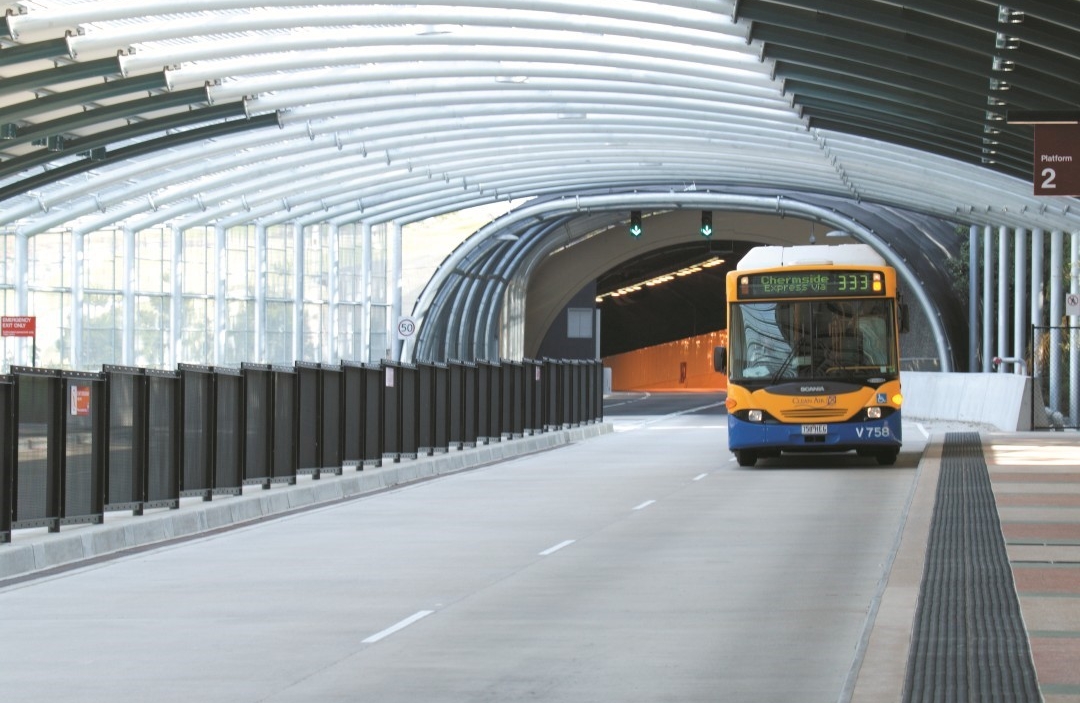To meet the architect’s specific design requirement for long spanning curves, the project needed a range of structural pipe sizes up to 323mm OD in single lengths to 23 metres, capable of being cold bent.
Orrcon Steel rolled around 150 of the main arch tubes in lengths of between 7 and 23 metres which were transported by road and rail to Brisbane for curving and hot dip galvanising.
Orrcon Steel’s ability to produce these precise and extreme lengths resulted in minimum waste, reduced fabrication and transport costs and an overall reduction in construction time.
The 65mm NB pipe used to cross brace the structure was manufactured at Orrcon Steel’s Brisbane Structural Mill. Once the busway was constructed, a special mesh was fitted to protect traffic and passengers from wayward golf balls from the neighbouring Victoria Park Golf Club.
Utilising Orrcon Steel’s Smart Steel Hollow Section thinking, the Brisbane Inner Northern Busway Section 5B successfully accomodates the public transport needs of the area, combining both functionality and visual appeal.
Project: Inner Northern Busway Section 5B
Contractor: Clough-Seymour Whyte Joint Venture
Architect: Hassell
Structural Engineer: KBR
Fabricators: Pipe Curving: Rollpress Fabrication: Gay Constructions Bracing Steelwork: Skyline Steel Fabrication
Orrcon Steel Products: Orrcon Steel Smart Steel Hollow Sections: Pipe sized 65mm NB to 323mm OD
For more information give Orrcon Steel a call on 1300 677 266
Water Conservation and Reuse
Water scarcity is a critical global concern, with resource-intensive sectors like steel production playing a central role in exacerbating water consumption. Fabrik has taken decisive action to address this issue by prioritizing water conservation. The company has acknowledged the imperative to curtail its reliance on freshwater sources and safeguard the integrity of local water resources.
Fabrik has embarked on a path of innovation by deploying cutting-edge water treatment technologies that enable the recycling and reuse of water throughout its manufacturing operations. This forward-thinking strategy has substantially reduced water consumption and has concurrently diminished effluent discharge. As a result, the company has made significant strides in preserving nearby water bodies and ecosystems.


